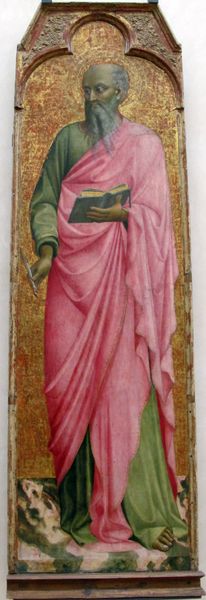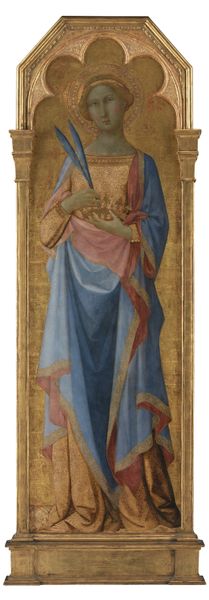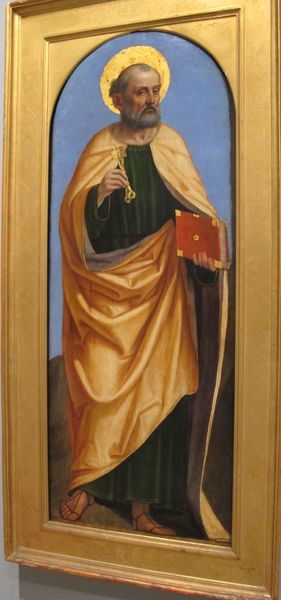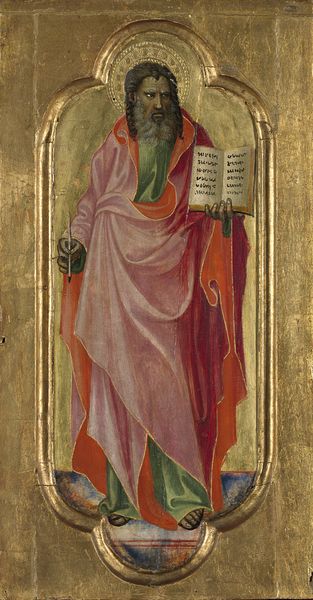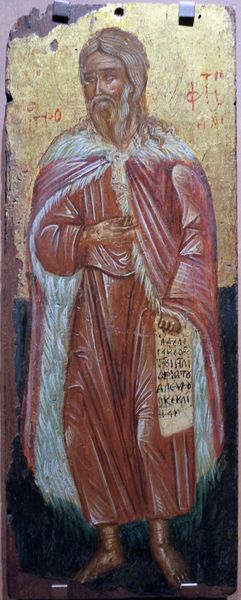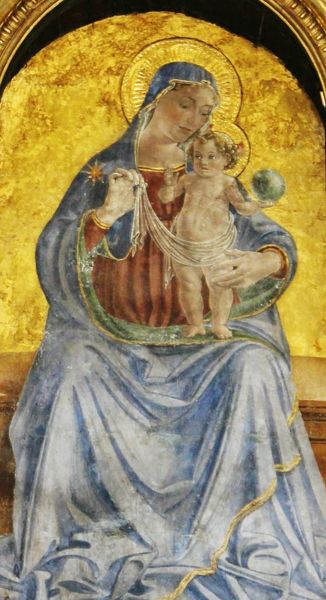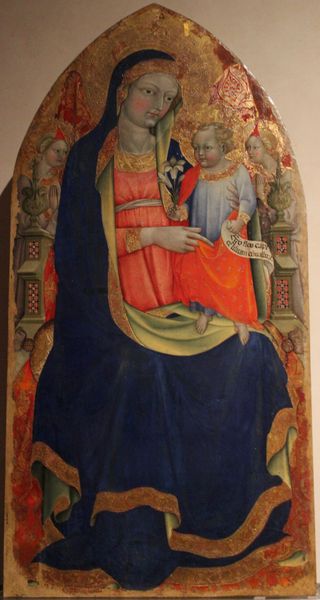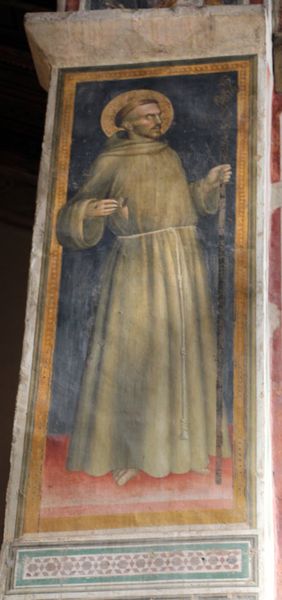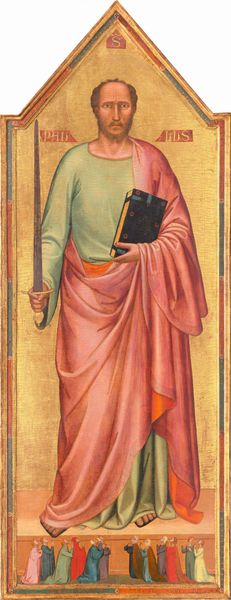
tempera, painting
#
portrait
#
gouache
#
narrative-art
#
tempera
#
painting
#
oil painting
#
history-painting
#
italian-renaissance
Copyright: Public domain
Curator: This is Luca di Tommè's "s. g. battista", a tempera painting from 1380. Editor: The figure strikes me. It's a singular portrait with a rather haunting stillness to it, even with the active gesture. What social narratives can be extracted from it? Curator: Well, portraits of saints were rarely just about the individual; they served a didactic purpose, offering models of piety. Consider John the Baptist – his ascetic lifestyle, his challenging of power. How does Tommè's depiction of him either uphold or challenge societal norms of the time? Editor: The subject's gaunt features speak to his austere reputation. The fact that his body isn't idealized makes him feel relatable, embodying penance. Does the inscription on the scroll provide further context to the narratives embodied in this piece? Curator: Absolutely. Deciphering the text on the scroll situates him within the framework of salvation and repentance. His words carry immense power, shaping beliefs and impacting the lives of those who followed him. How might the patrons have interpreted it? Editor: It’s all very thought-provoking. Understanding the portrait as a cultural artifact reflecting religious beliefs and power dynamics has really changed how I see it. Curator: Indeed. Art isn’t created in a vacuum. The socio-political and religious landscape of the time shaped its creation and interpretation. It makes you wonder whose voices were amplified and whose were suppressed in these portrayals, doesn’t it?
Comments
No comments
Be the first to comment and join the conversation on the ultimate creative platform.
